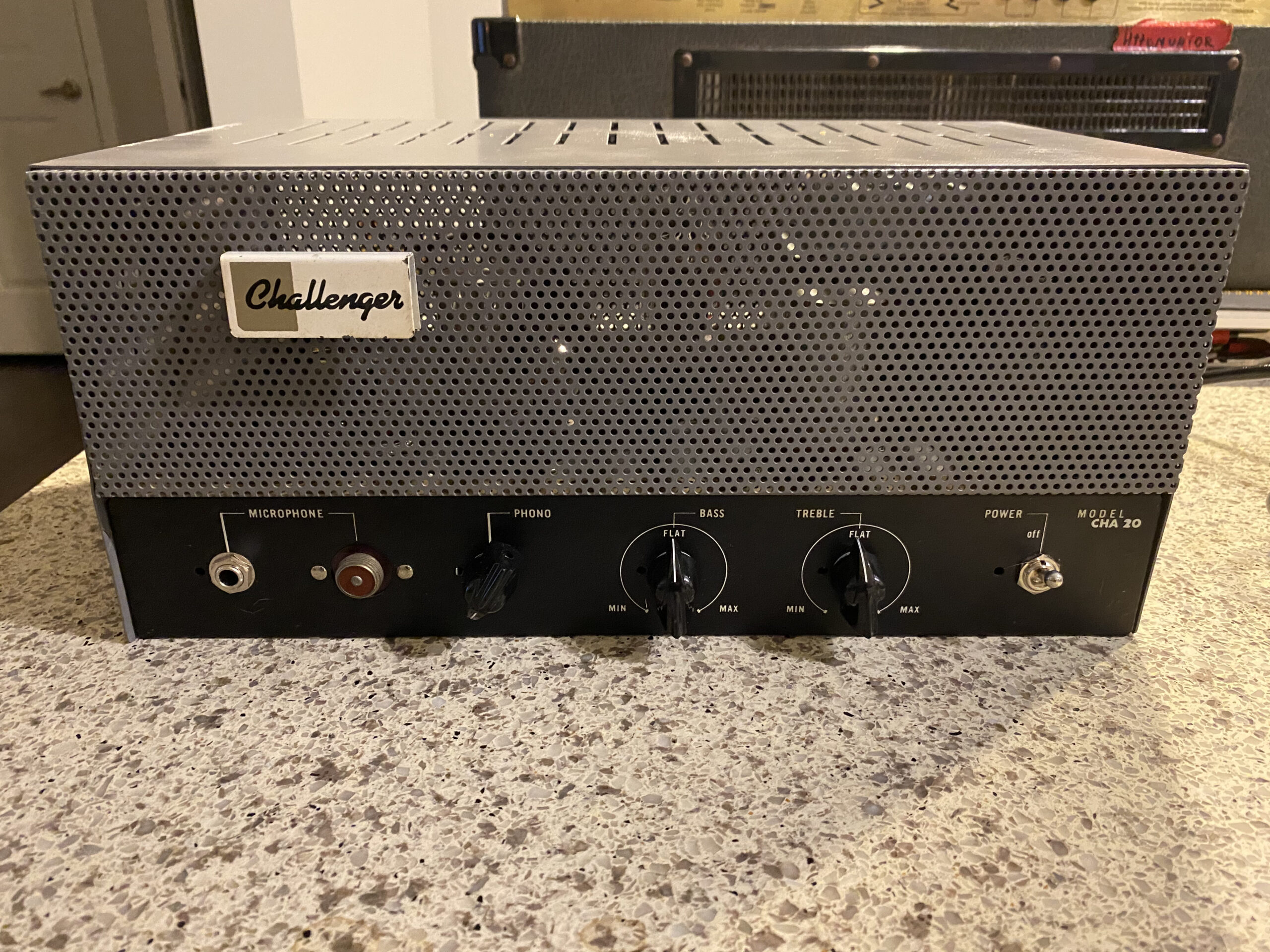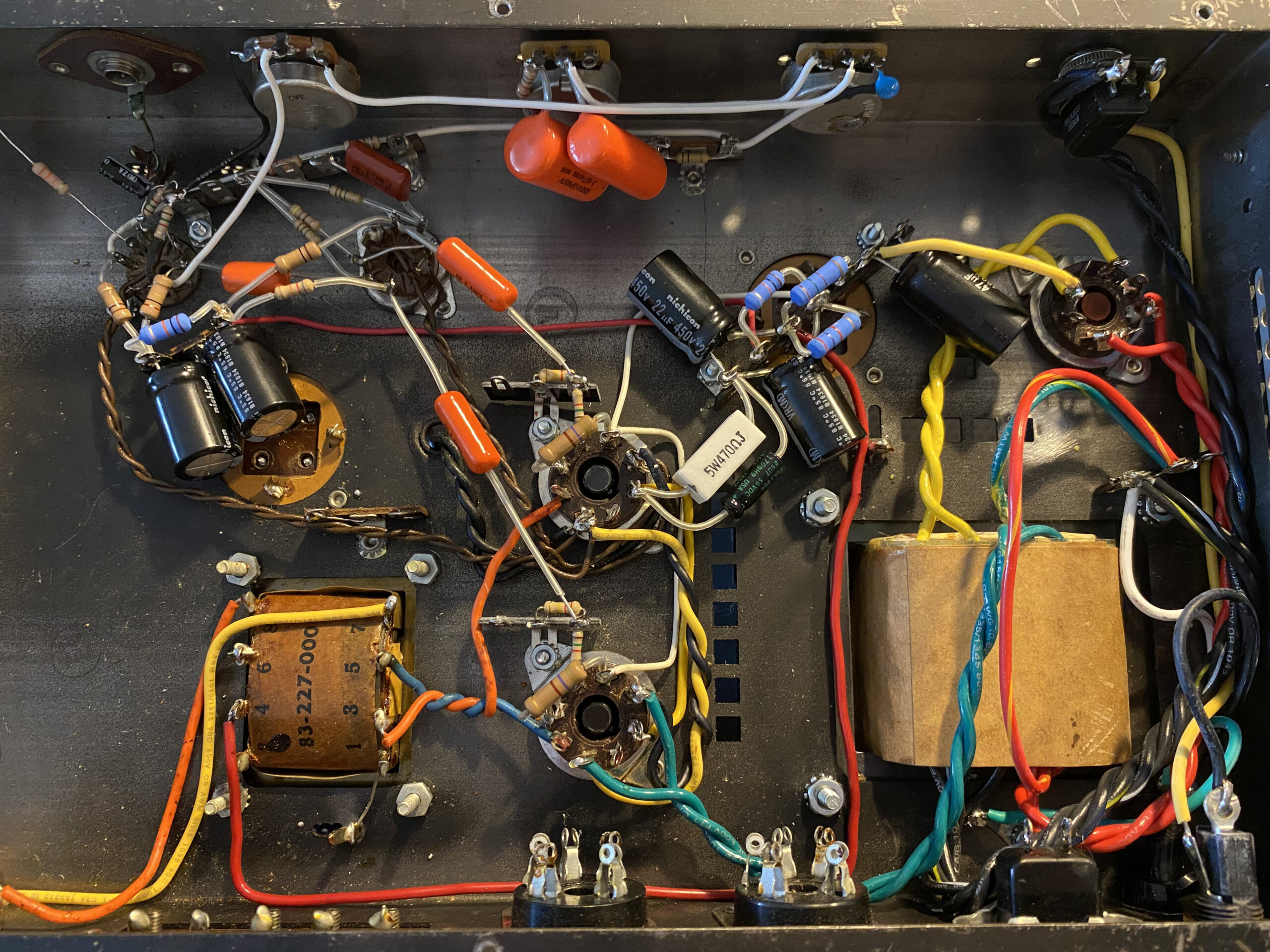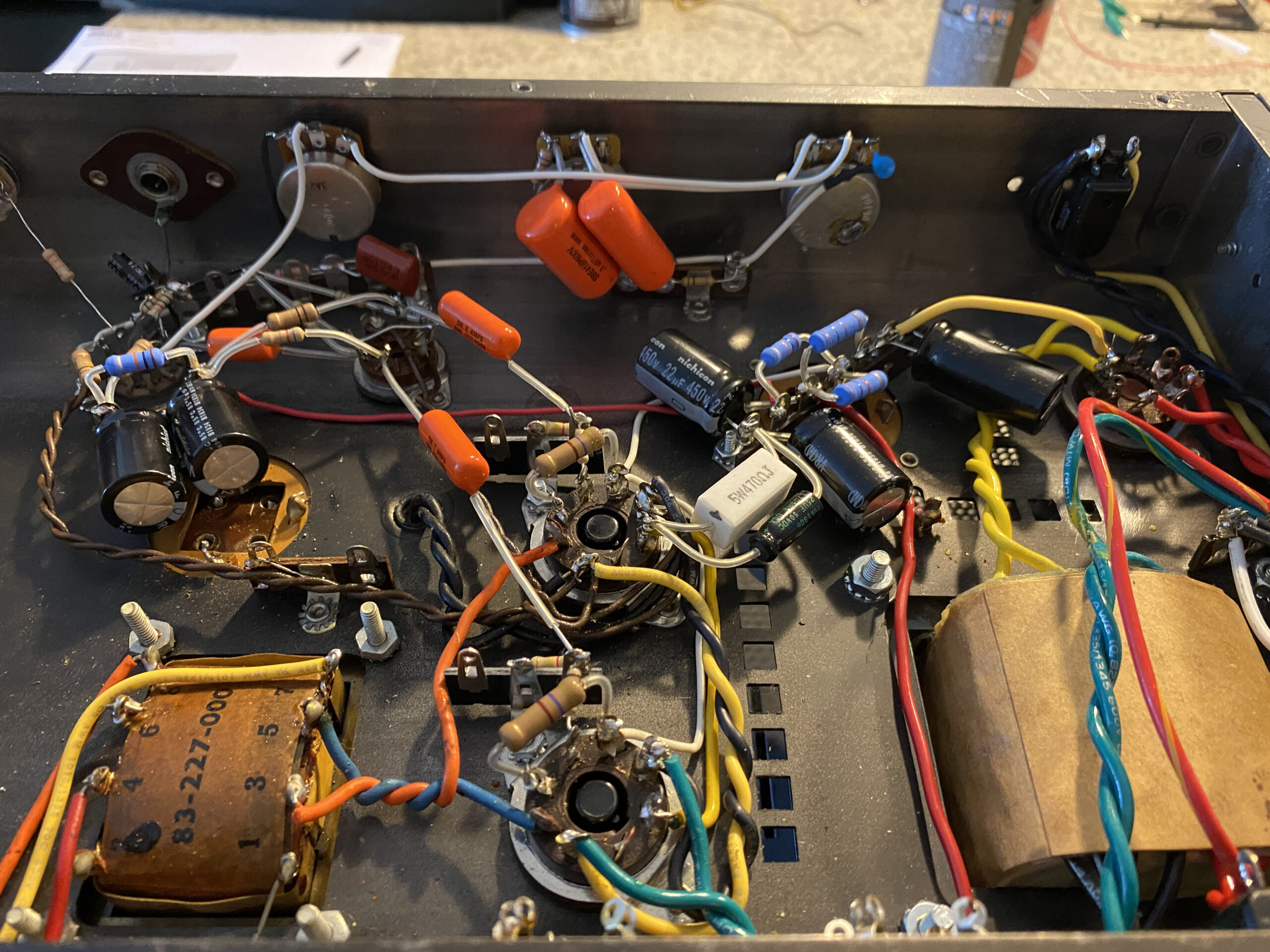I picked up an old Bogen PA amp a while back, likely from eBay, to rebuild into something new. I have always enjoyed rebuilding these amps, either by tweaking the existing circuit or completely gutting and starting fresh. There is something about the limitations and challenges of laying out a circuit that stimulates the creative side of my brain. It’s almost as if the amp “tells” me what it wants to sound like.
The first part of any rebuild is seeing if I can find a copy of the original schematic. Otherwise, I have to trace the circuit to understand what’s going on. In the case of this Bogen amp, I managed to find a high-resolution copy of the schematic.
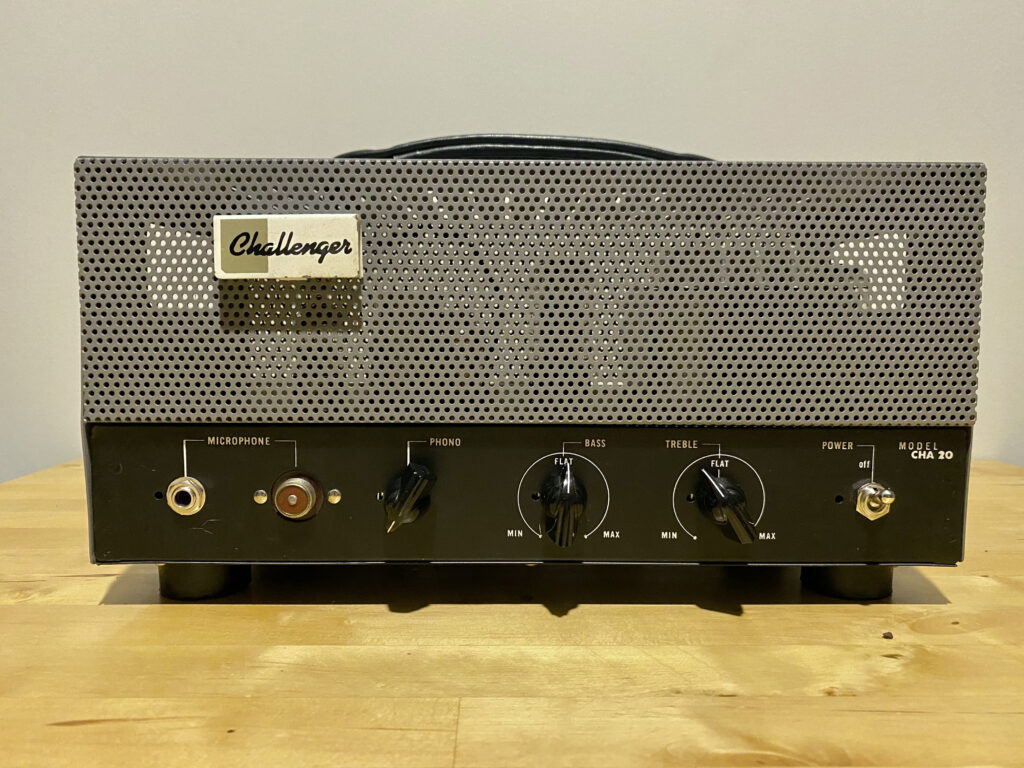
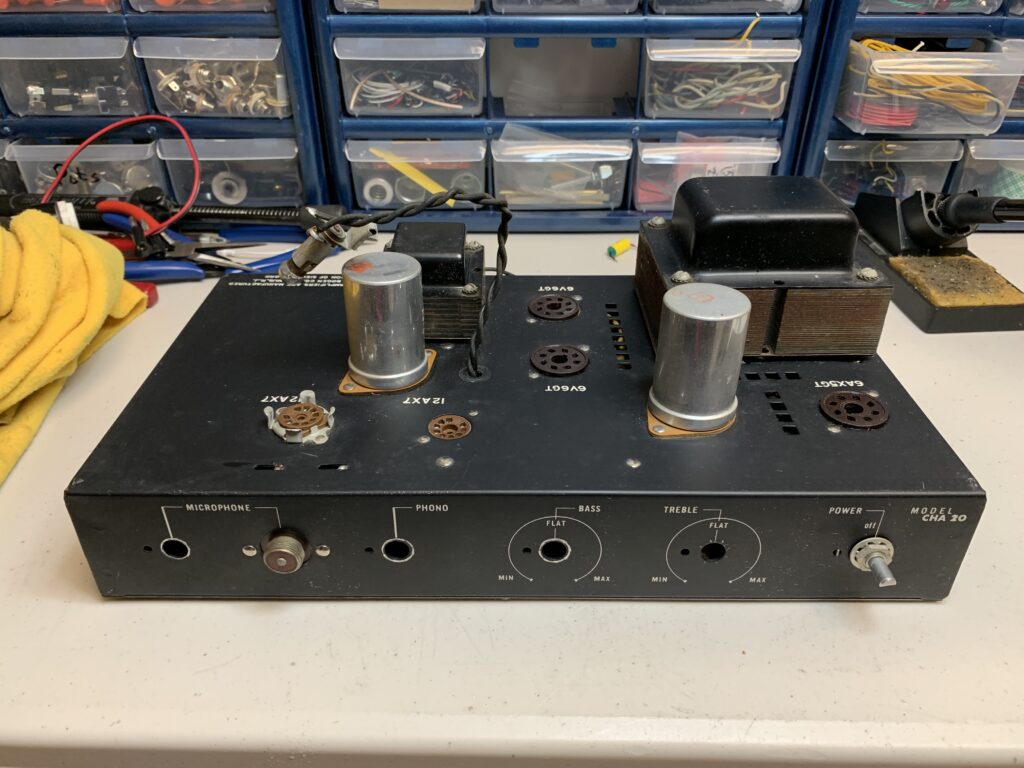
Original Circuit Analysis – Power Supply and Output Section
Looking at the design, the first thing I noticed was the power supply node going to the 6V6 output tube plates running at a whopping 455V! And that was with 110-117V AC from the wall outlets. I could imagine this running well above 500V with today’s wall voltages. The older RCA 6V6 tubes could handle this kind of abuse, but today’s tubes would not last long at all. As far as the power supply goes, it was nothing special, although the filtering was rather low for a PA amplifier: 16uF on the first stage and 5uF for the remaining stages. The 6V6s are set up with cathode bias using a 325-ohm resistor and a 50uF bypass cap. The center tap of the filament secondary was connected here as well to elevate the heaters with a little DC and reduce hum.
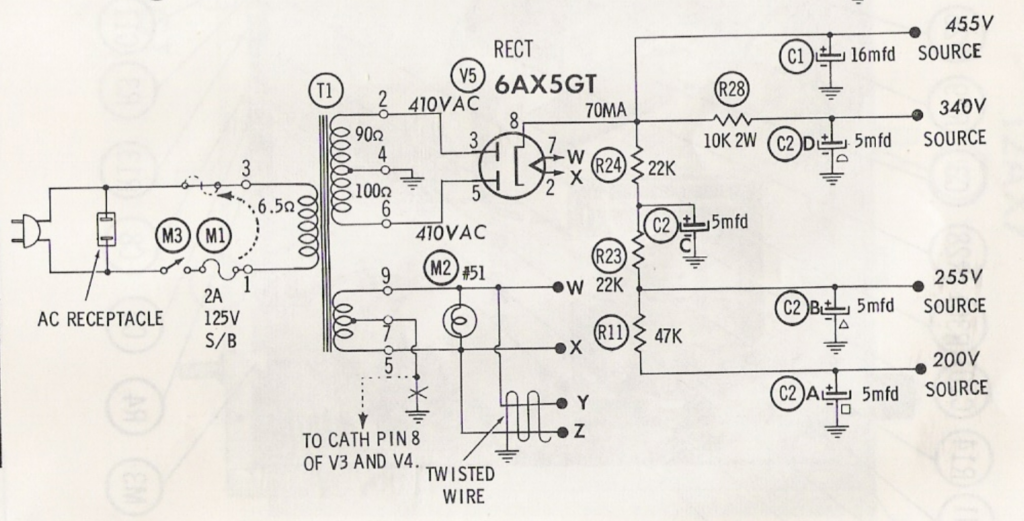
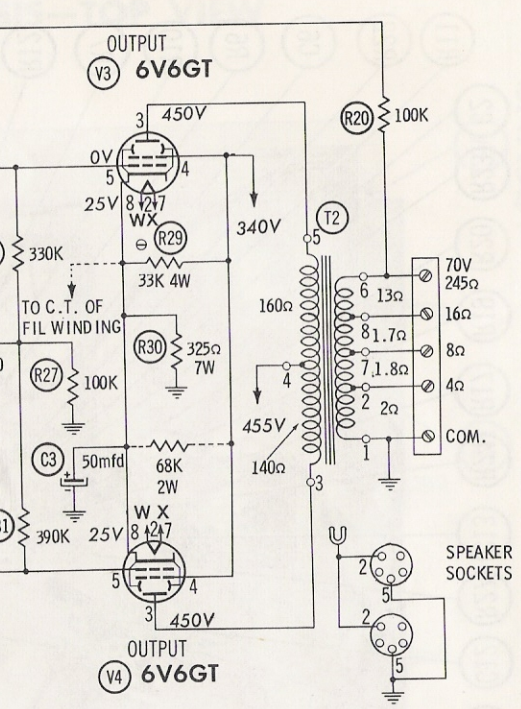
Original Circuit Analysis – Preamp Section
Switching gears to the preamp section, it used two 12AX7 preamp tubes. The first half of V1 was used for the gain stage of the mic input, while the second half mixed the output of the mic stage and phono stage, which were then amplified by the second half of V1. After this stage, it drives a Baxandall treble/bass tone stack that then goes directly into the phase inverter. Both halves of V2 handle the phase inverter using a paraphrase inverter setup. Essentially, the first half of V2 amplifies the signal, then the output splits: one to the 6V6 and the other to a voltage divider that feeds the grid of the second half of V2. That stage then amplifies the signal and drives an out-of-phase signal into the second 6V6. There is a bit of negative feedback fed back into the cathode of the first gain stage of V2 to keep the power amp somewhat stable.
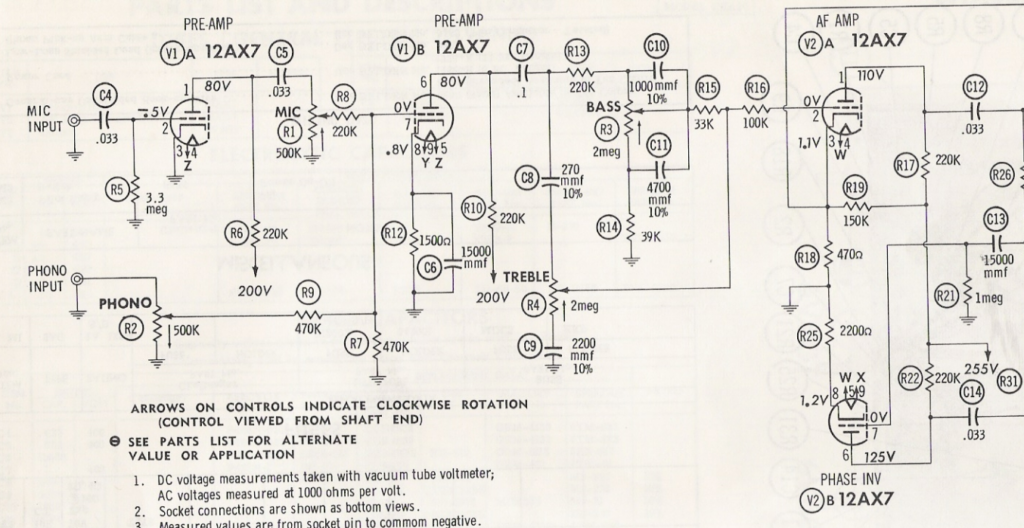
So what do I build with this thing?
I went back and forth on the design for a bit, trying to figure out if I wanted a higher output amp running 6L6s since it had plenty of juice on tap, or if I wanted to stick with the lower power of a 6V6 amp. Looking at the output transformer of this amp, I felt that a pair of 6L6s would cook that poor little output transformer, so I opted for a lower power amp. But how to get the B+ down to a nicer level that modern tubes wouldn’t melt down in? I tried using a high-wattage zener diode on the center tap of the high voltage secondary, but it barely pulled down the voltage enough to feel comfortable. I did some digging around in my spare parts and happened to come across a Mojotone JTM45 power transformer wound for a lower high voltage secondary. Perfect for running a pair of 6V6s! Plus, this had a 5V tap for running a tube rectifier that is currently made instead of the 6AX5 tube. The bolt pattern was an exact match! So in it went!
The New Circuit
Rather than trying to make some crazy turret or eyelet board to custom fit in the amp, I went with point-to-point style wiring. I like the challenge of laying these types of circuits out, and I can put them together a lot quicker than running a bunch of wires from the boards. I decided to go with the preamp section from the Normal channel of a Deluxe Reverb. Very simple but clean, with Treble and Bass controls (already labeled on the front of the amp). Then, I mated that to a long tail phase inverter that was tweaked just a little, driving a pair of 6V6s in a cathode bias setup. I chose not to go with any negative feedback for this amp. I tend to favor the sound and feel of a power section that’s not being so “limited” by a lot of NFB. Don’t get me wrong, the 60s Fender amps were great but way too clean for my liking.
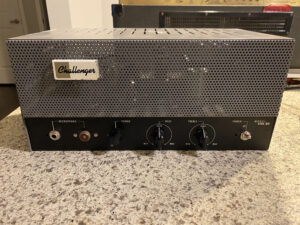
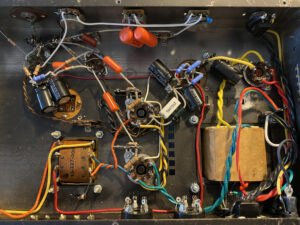
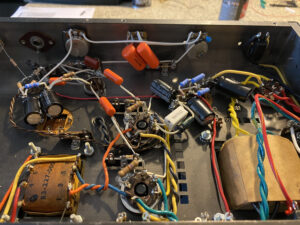
How does it sound?
Imagine having a clean amp that breaks up when you dig in and barks when you drive it with pedals. That’s the best way I can describe how the amp sounds and feels. It will compress a little when you really open it up, but you still have that touch response that we all love. If anything, it’s like combining a 60s Deluxe Reverb with a 50s Tweed Deluxe power section. Great pedal amp without being so stiff. It has since been sold, and its current owner is loving the amp.
